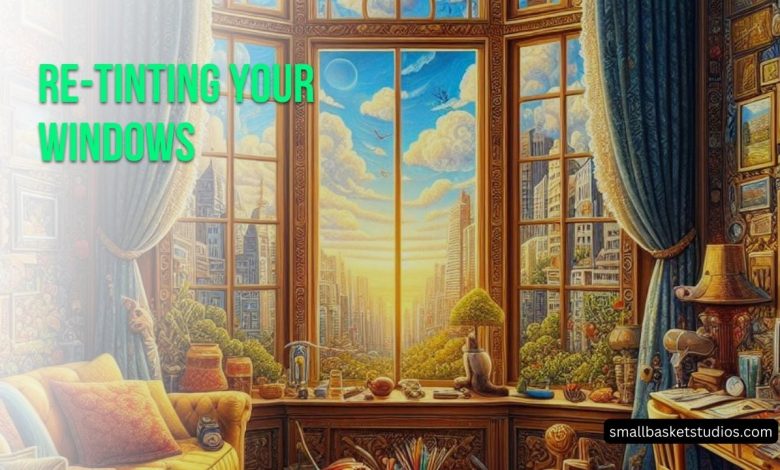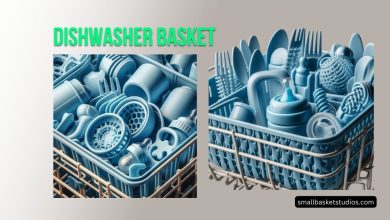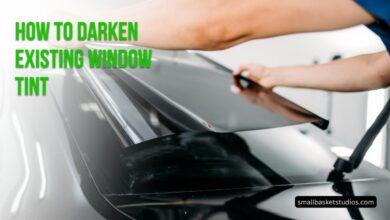ReTinting Your Windows: A Professional Guide to Why, How and When?

Has your home’s window tint started looking a little lackluster lately? Faded color, visible bubbling or scratches making it an eyesore viewed from the curb or street? Before you go replacing those tired old window films at steep cost and hassle, consider refreshing your view through strategic reapplication instead. Window tint rejuvenation is an often overlooked way to revive heat protection, privacy, and aesthetic appeal at just a fraction of full replacement expense and disruption. Advances in film technology and application methods now allow re-enhancing damaged tint to near original performance levels with ease. This complete guide to reTinting will explore the ins and outs of identifying tint issues, evaluating DIY versus professional methods, why OEM films matter, planning the application process meticulously, and maintaining your revived view for the long haul. Soon you’ll have windows looking pristine and vibrant once more without blowing budgets.
ReTinting Your Windows
Ready to reclaim crisp charming curb appeal, slash energy bills, and revive privacy without the price tag of full tint replacement? Then let’s unlock the art of tint reapplication magic!
Contents:
- Benefits of ReTinting vs Replacing
- Identifying Tint Issues Needing a Refresh
- Complete Process Overview & Planning
- Comparing Professional vs DIY Methods
- Material Options: OEM vs Aftermarket Films
- Frame by Frame Application Strategies
- Maintaining the Magic Longterm
- Window Tint Refresh FAQs
The Power of ReTinting Done Right
While old tint served your home well, the long term effects of sun, weather, cleaners, and age degrade films over 5-7 years typically. Rather than automatically defaulting to expensive full replacements though, extending existing tint’s usefulness through reapplication delivers compelling upsides:
Preserves Existing Investment: Refresh just the outside surface rather than pay for the entire tint job again.
Significant Cost Savings: Professional reapplication averages just 30% of full replacement price. DIY even less.
Enhances Curb Appeal: Revives consistent clean, vibrant window appearance.
Sustains Energy Efficiency: Restores insulating solar heat and UV ray barrier ability.
It’s Quick & Minimally Disruptive: ReTinting done in just hours without removing original tint.
Customization Options: Alter opacity, color and grades easily.
Is it Time? Identifying Windows Needing ReTinting
Determining when to revive fading film comes down to a few telltale signs of breakdown:
Purple Hazing: Chemical film breakdown shows as purple discoloration
Bubbling & Peeling: Adhesive failure causes bubbles under film
Scratches & Nicks: Physical abrasions degrade light filtering performance
Fading & Yellowing: UV exposure robs vibrancy alter desired tints
Reduced Privacy/Insulation Value: Harder to see out but easier to see in are key indicators
As damage progresses, tackling rejuvenation early on maximizes renewal effectiveness and saves money over eventual full replacements down the road.
We recommend proactively reassessing tint conditions every 2-3 years for preventative care. Catching issues while still minor better preserves integrity.
The Complete ReTinting Process Explained
Transforming tired windows into a uniformly vibrant view again combines both art and science. Done well, the meticulous process unravels in key strategic phases:
Damage Assessment & Site Prep
Experts thoroughly examine each window to gauge damage levels, opacity goals, and any special site preparation needs. Proper prep work ensures optimum film bonding.
Frame Masking & Protection
Frames get wrapped in tapes and protective sheets to shield from fluid leaks, scrapes, and overspray. Ensures crisp sightlines.
Surface Preparation
Professional grade cleaners strip glass down to remove dirt, oil and other bonding contaminants. Promotes adhesive grip.
Spray Application
New film gets uniformly misted across the window’s exterior surface only. Done precisely to avoid runs and unevenness.
Squeegee Leveling
The installer presses a curved applicator across the surface to evenly smooth and set the fluid tint layer. Pressure bonding critical.
Trimming & Finalizing
Once cured, any masking tapes get removed and the film trimmed neatly around the window perimeter edges.
Quality Inspection
Windows get checked over thoroughly post install to confirm perfect uniform adhesion free of bubbles, scratches or alignment issues.
ReTinting done meticulously in these major steps creates seamlessly integrated refreshes indistinguishable from new!
Professional vs DIY: Which is Right For You?
While advancements make DIY kits increasingly user-friendly, the exacting techniques involved in achieving flawless results means pros still edge out for most people.
Consider this decide matrix covering the major differentiation points:
| Professional ReTinting | DIY ReTinting Kits | |
|---|---|---|
| Cost | $100-$300 per window | $50 – $70 per window |
| Convenience | No home prep needed. Installers handle all tools/materials/disposal mess | Home protection and prep. Purchase all materials upfront |
| Expertise | 20 years experience average. Training to handle imperfect scenarios | getUser guides but limited experience |
| Film Grade | Access to original specification OEM films. Advanced aftermarket options | Basic universal precut aftermarket films |
| Cure Method | Autoclaves and heat lamps speed cure times for same day use | Air dry times of 1-5 days |
| Finih Quality | Nearly invisible uniform application within 1 mm tolerance | Higher risk of visible bubbles, unevenness and trim lines |
| Warranties | Lifetime film and labor warranties, plus reapplication discounts | 1 year material-only warranty |
| Turnaround Time | Installation completed same day in 2-5 hours | Several hours working time needed over multiple days |
While advancements close the gap, pros still edge out DIY through experience, grade of materials, speed, reduced hassles and generally crisper results.
Factory Spec or Aftermarket Films: The Best Material for ReTinting Optics
Just like quality paint transforms woodwork, quality film makes or breaks revived window views. Two main material contenders dominate:
OEM Optical Films
OEM refers to “Original Equipment Manufacturer” which means the factory grade film originally installed. This matches your windows’ exact light transmission specs. While pricier, factory authorised dealers gain access to these premium films to guarantee compatible performance.
Aftermarket Multipurpose Films
Universal multipurpose films work across more window types and makers. They offer a simplified good-better-best grade hierarchy and much lower cost. But lack the precision light tuning of original films. Great for basic solar protection needs.
We generally recommend sourcing OEM film when possible either through authorized dealers or reputable shops with supplier access. Precision factory grade films guarantee the closest performance match to original intent. If on a budget, look for mid to upper tier aftermarket options.
DIY ReTinting: Your Step-By-Step Game Plan
Intimidated to tackle refreshing your home’s faded film solo? With the right preparatory mindset, tools and techniques, DIY kits make revitalizing cloudy windows surprisingly achievable. Here’s your game plan to professionally-precise results:
Gather the Right Gear
Quality squeegees, utility knives, and application fluid make all the difference. Prepare window surfaces too using special degreasing and abrasion solutions.
Learn Pro Application Techniques
Spend time watching online video guides to master professional squeegee motions and get familiar with handling films.
Set Up a Protected Workspace
Shield ground, walls, glass surfaces optimally to prevent overspray and damage. Corner off the work zone securely both inside and out.
Focus on Just 1 Window Initially
Get perfectly comfortable with alignment techniques and fluid dispersion on a single window before attempting the whole house.
Work Methodically in Sections
Tackle large windows in divided quadrants, applying solution methodically then squeegeeing immediately before moving to the next section.
Inspect Progress Frequently
Keep checking for fluid bubbles, debris trapped under film and adhesive consistency as you go. Catch imperfections early!
Take Your Time!
Allow fluids ample drying time between layering coats. Rushing steps haunts first timers. Expect the project to take 8-10 hours minimum.
While pro reapplication skips the prep work and dries faster, carefully following these keys in a no-rush timeframe promises stunning DIY refresh results!
Pro Touch Maintenance: Keeping New Tint Gorgeous Over the Long Haul
You invested good money into revitalizing faded film. Now protect that refreshed view armed with easy upkeep habits. We recommend:
Handle New Films Gently
Avoid touching the surface at all for ~15 days while adhesive fully cures. New filmsscratch most easily when fresh.
Clean Exterior Only
Use soft microfiber cloths lightly dampened only with water. Avoid ammonia/alcohol cleaners.
Rinse Off Debris
For stubborn dirt, generously rinse the exterior with low pressure water. Avoid abrasive scrub brushes.
Inspect Annually
Check at least yearly for any new bubbling, cloudiness etc indicating another refresh soon required.
With tempered care, professionally reapplied film should last another 5 years minimum. DIY applications may require more frequent touch up. Either way, a few careful cleaning habits better protects your view!
FAQs: Your Top Window ReTinting Questions Answered
Still evaluating whether refreshing or replacing makes sense for your worn out windows? Here’s insider answers to the most frequently asked queries:
How Long Does Professional Reapplication Take?
Whole house projects average 6-10 hours depending on home size. Appointments booked in sections work quickest.
Does the Old Film Get Removed First?
Unlike full replacements, installers reapply fresh film directly over existing tired film without removal. Saves hours!
Do Windows Lose Clarity After Multiple Reapplications?
Maximal light transmission declines slightly after 2 applications as layers build up. Performances still mostly aligns with original specs.
Can Any Grade Film Get Reapplied?
While technically yes, premium films and reliable installers used originally ensure better long term renewal results.
Does Interior Film Also Need Replacing?
Interior films last 10-15 years thanks to less UV exposure. Unless scratched or bubbling, reapply exterior only to save money.
What About Hard Water Stain Damage?
Light stain buildup gets covered by fresh tint no problem. But heavier mineral staining requires professional polish removal first.
Achieve Visibly Revitalized Views Minus the Headache
Rather than dread tackling tired window tints house-wide or default to pricey full replacement, strategic refresh restores clarity and curb appeal with just a fraction of the hassle. A pro job transforms lackluster views in a day using original films while DIY kits maximize bang for buck.
Either route, dramatically clearer daylight, consistent insulation, and privacy geteffortlessly renewed to transform any home exterior. Just think of the decorative possibilities unlocking once those windows regain their captivating transparency!




